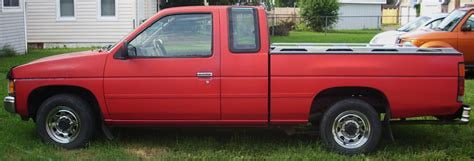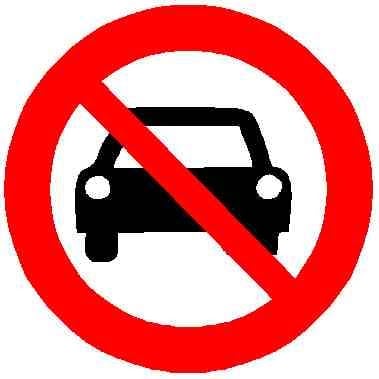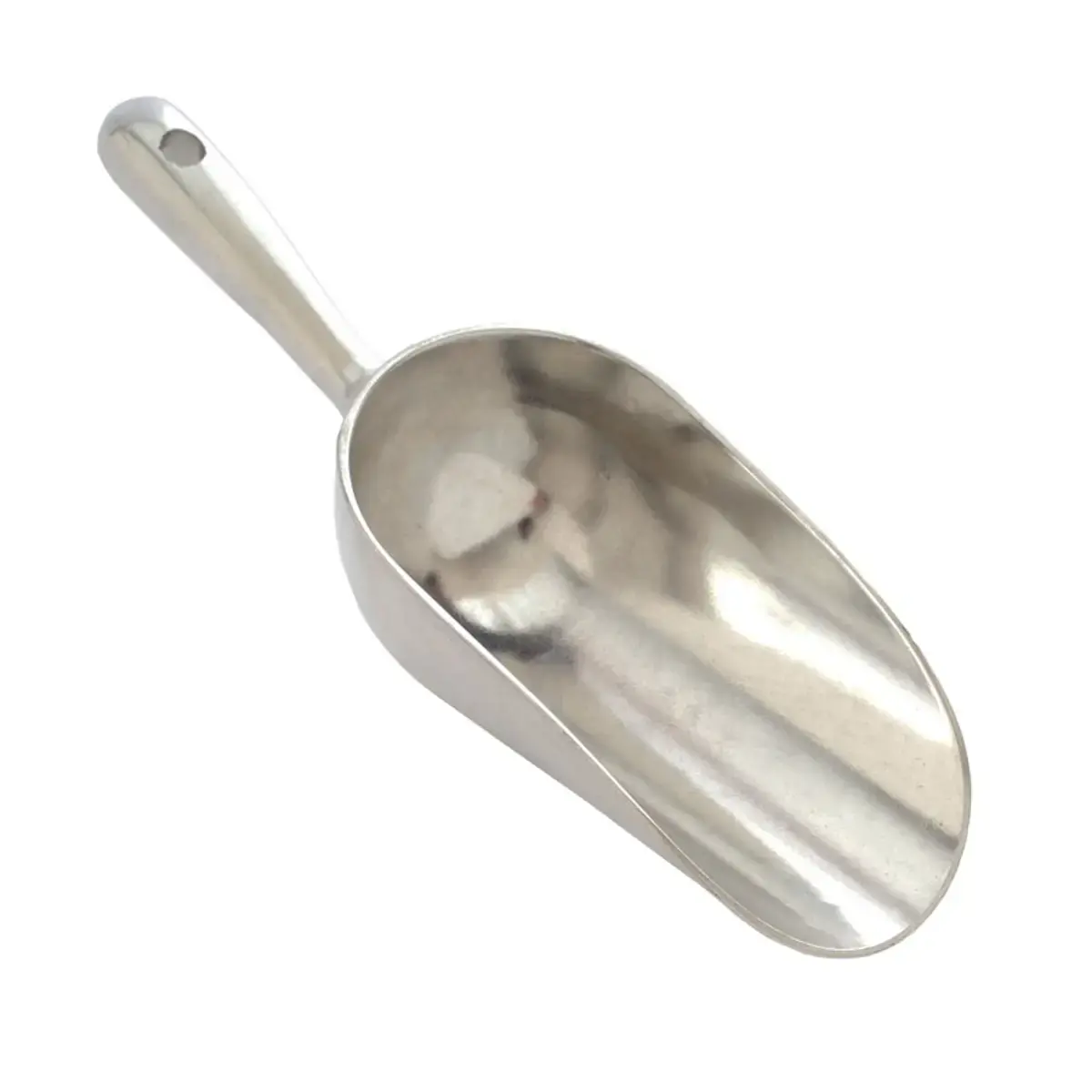Comparison left vs right for a craftsman who doesnt know which one he should buy:
-
l/r same bed size
-
r lower bed for way easier loading/unloading
-
r less likely to crash
-
r less fuel consumption and costs
-
r less expensive to repair
-
r easy to park
-
r easy to get around in narrow places like crowded construction sites or towns
-
r not participating in road arms race
-
l You get taken serious by your fellow carbrained americans because ““trucks”” are normalized and small handy cars are ridiculed.
So unless you are a fragile piece of human, choose the right one.
I agree with the sentiment of this post, but to be fair, you can also carry 3 or 4 passengers in the left vehicle, as opposed to only one in the right.
The main problem is the US fuel economy regulations actually encourage manufacturers to build bigger trucks and SUVs so they get classified into a category that has looser fuel economy requirements.
You are right. Still the american truck is hugely oversized, even for 5 persons and cargo. But, for the sake of the argument, imagine standing on the highway. Have a gander at the cars around you. How many people per car do you see? Exactly, 90% of the time there is exactly one person in a car. What makes the american truck an extreme waste of space an ressources, beside being a health hazard to everyone outside of the car.
Cars should get smaller, not bigger.
The extended cab version of the right truck would still tick all the boxes.
Off-road and towing capacity are probably the main feature you give up with that sort of design. Whether or not most people need that is a separate story.
They make kei trucks in 4x4, but you do lose ground clearance.
That being said, what kind of “off road” conditions are any of the trucks really contending with?
Whats best is the kei 4x4 is probably significantly better in most off road situations due to its lighter weight and shorter wheel base. You can drive/manuever around things easier and when you are on mud or sand, the lighter weight prevents sinking.
You’re mostly right. The main problem is that manufacturers chose to ignore the spirit of the US CAFE fuel economy regulations, and instead build everything bigger and bigger. That’s why quarter-ton trucks grew to the size of the F150 in the year 2000 when they were quite a bit smaller before.
It’s not the fault of the regulation. It is the fault of the manufacturers and to an equal extent, of consumers for preferring gigantic vehicles.
And let’s not let GM off the hook for the 1990s Suburban, which began to, quite literally, dominate the roads. Those fuckers were the original huge grocery getter, and they had truly awful turning radius and blind spots. You just couldn’t drive them safely or courteously if you tried. So of course everyone wanted more powerful and bigger vehicles to compete.
I’m actually going to fault regulations on this one. The EPA bases fuel economy requirements on the wheelbase of the vehicle. They used to publish a range of values based every other year or so, but then changed it to a formula. The formula is non-linear, making it neigh impossible to build anything with a small wheelbase anymore. In theory, they could design a small hybrid truck, but would need an obnoxiously long bed to compensate.
I watched a YouTube video on it not terribly long ago, and iirc, a 95 Ford Ranger, if held to the current formula-based regulations, would need 60+ mpg to be produced without major penalties to the company.
The EPA either needs to reevaluate the formula, or start manually publishing the numbers with values that are actually achievable by the industry at scale. Basically, by publishing the formula, manufacturers are able to min-max their designs in all the wrong ways.
EDIT: Updated for clarity and fixed some typos
Really, the fault of the regulations is that the penalties for the number of vehicles in the heavy polluting category weren’t nearly stiff enough. That’s a big part of why the automakers went the opposite direction and just made bigger and heavier vehicles - they could.
Thanks for pointing our the real incentives which are always some bullshit about more money and less regulations - basically the reason capitalism sucks at innovation - it doesn’t care about whats important and in some cases actively hates it
What’s important for you specifically is not what is important to the customer base writ large.
You have problems with fellow consumers that you blame on manufacturers.
Capitalism does not follow the desires of consumers, it follows the desire of shareholders.
This is the most braindead comment I’ve read in a long time.
Can’t tow a boat an RV or trailer with the Japanese vehicle. All things Americans do for fun. For work? The Japanese vehicle can’t haul 6,000 lbs of lumbar or steel, nor can it pull another vehicle out of a ditch.
Just gonna keep on posting this

This is why Pedestrian crash avoidance mitigation (PCAM) needs to be standard required by law, and will be on Californian shortly, and with California goes the world.
This pic is fantastic but I wish there were more examples from actual alternatives to what people claim they need the pickups for e.g. vans like Trafics, Kangoos/Berlingos, Mercedes Sprinter/Vito etc etc. There is at least a sprinter there in version pickup, which has a very good result as I’m sure the other ones would as well, because these things tend to have the windshield all the way at the front of the vehicle so you have great visibility for the front 180°, the back 180° depends on the configuration you have which range from completely closed/opaque cargo space to fully furnished 5/7 seaters with windows.
I love that there’s casually an Abrams in the middle there.
To anyone claiming that the bigger one is the safer one …
https://pubmed.ncbi.nlm.nih.gov/24499113/
https://worldpopulationreview.com/country-rankings/countries-with-the-most-car-accidents
From the Bloomberg & NLM articles
From a safety perspective, kei cars have a lot going for them when compared with American-style SUVs and trucks. Their light weight generates less force in a collision, and their stubby front ends reduce driver blind spots. Research suggests that their occupants are equally safe as those inside full-sized vehicles.
At first, I was going to criticize the collision speed of the example study, but found ( ok, I say found, I mean I googled for 15 seconds ) that the average American collision is occurring at less than 40mph, so good to go there.
Second, I was going to comment on the relative safety of being in the Kei truck and being struck by the 2500HD… but that just goes back to the ‘participating in the arms race’, so feels… stupid.
So, overall: Thanks for providing this. It directly answers the primary concern of ‘what if I hit something tho’. There are some other angles I could nitpick on maybe, but they all feel like a kind of ‘consolation prize’ to the argument.
One thing you also need to remember, is that the smaller car has a far smaller braking distance and is more maneuverable, so is less likely to get in a crash. The lower centre of gravity also decreases the likelihood of a roll-over.
Really wish I could get my hands on one of these. The import process is so complicated it makes it barely cheaper than a domestic used truck.
It’s probably model dependent, but the one I drove around for my job in Japan had zero leg room. My knees were resting on the dash as the passenger with the seat all the way back.
Is this because it’s made to fit the average Japanese adult or is it just that small
I get the point your trying to prove but i don’t think it’s fair to compare these 2 as they are meant for different things and also brings in the assumption that all American craftsman vehicles are 2500HD’s, which is not true.
Now I agree, people using the one on the left specifically as a daily driver is actually overkill and are not using it for what it’s supposed to be used for. The one on the left is a 2500HD. They are SUPPOSED to be used for hauling and carrying equipment. The crew cab is meant to also transport the crew that is for said equipment.
The one the right is specifically meant what appears to be lighter duty use and hauling. I agree that people should use the right tool for the job. I find the one on the right to be very practical. But for the sake of this post as a means to compare Japanese craftsman vehicles to American.
You should actually show something actually comparable. Like a ford ranger with a standard cab. Which might be about the same size and power. Maybe even the same bed size. Not something that has HD (Heavy duty) in its name.
Yep. I’m an American tradesman and the trucks that the guys drive are way too beefy for what they actually do.
I’ve gotten by with small Toyota trucks, and rav 4s…much to the chagrin of the good old boys. Should have seen their face when I rolled up in a prius…till I tell em I get 50 mpg easy.
I would love a small little truck like this one in the photo.
Hey! I live in Korea. These things are ubiquitous. They are colloquially called “Bongos” as that was the name of an older, popular model. There are more and more electric ones on the road these days, too.
Unfortunately, you can find a few of the monstrosities on the left here these days, too, but at least very few. They’ve got nowhere to park them here. Haha!
95% of the craftsmen I know have panel vans. Easier to both organize and secure tools and materials, more overall room.
I lived in (and now commute through) a neighborhood of older houses, and higher incomes, so I see a lot of contractor vehicles. It seems like it breaks down as landscapers and lawn services use the pickup trucks; trades companies (plumbers, electricians, HVAC, carpenters, painters, etc.) use vans or box trucks; and the independent guys tend to use Dodge Caravans. Nearby, the university uses fleets of kei trucks (the low-speed versions because “freedom”), Ford Model E vans, and Caravans. I think the landscaping crew has pickups.
There are an increasing number of company pickup trucks, but most of them appear to be pavement princesses, used only for their usual function: transporting egos, not equipment.
The Japanese one would be fun for use in New York City. LOL. Easy parking, easy to navigate double-parked clowns. It just needs a bed cover to lock down anything purchased.
I don’t understand pick up trucks, unless you do landscaping or farming. In a van your shit won’t get stolen as easily.
R can’t tow for shit.
R has a 2,200 lb carrying capacity. It can haul or tow almost anything a regular person needs to 99% of the time.
These little trucks also build and supply massive countries across the world. It’s preposterous to think you need 4,000lbs of carrying capacity day in and day out. You absolutely do not.
Great, but carry capacity and towing capacity aren’t the same thing. And it doesn’t matter if I don’t need to tow something everyday, even if I need to tow something monthly or even yearly the one on the right just can’t do it. Also from my very brief searching it seems like a KEI truck absolutely does not have a capacity of 2200lbs, more like 800-1500lbs. I will agree though, if you just need a work vehicle and a truck bed then the KEI truck is probably fine. If you need to tow, it absolutely is not.
If you need to tow something that heavy once a year, you are not buying a car for that.
I mean, I wouldn’t but that thing still has to get moved somehow. That truck still has to be available somehow.
Yes, you can always rent one when you need it.
I don’t think the big family that is going on their once or maybe twice a year camping trip with their large trailer is going to rent a truck for their vacation. But, yes that’s a possibility.
I mean if our culture wasn’t so car centric and centered around instant gratification that wouldn’t be an issue, it’s not too hard to rent a car at all, especially if you’ve been planning a year long trip. Not trying to soapbox here, though, I’m very reliant on my car too and see doing all that as an inconvenience, but I realize how absurd it is to feel that way.
Since it’s become legal to import these Kei trucks and vans, I’ve been loving the pictures of them all over the place. I have no need to haul cargo around, but I’d definitely love one of these things if I did in the future. I just don’t like that you’re only allowed to buy 20-year-old vehicles like this due to import laws.
My mom is disabled and uses a power chair (that does not fold. Medicare won’t pay for sensible things like that). Our choices were saving up to buy a wheelchair van, which is so far outside of our means that it may as well cost a million dollars, or buy a pick up truck and a set of ramps. We searched for months and months for anything small, and could not find it. Eventually went with a Nissan frontier, a 2012, so the larger model. I’d kill for one of these little things. Would be perfect for us.
There’s one guy around town I see sometimes who has some sort of thing that goes on the hitch receiver of his minivan. If I see him around I might be able to ask him where he got that if I remember to. Saw him use it and it too was a non-folding power chair. He pulled up to it with the power chair, pulled ramps down, drove up onto it, pulled himself to his feet using the rear windshield wiper, stowed the ramps and leaned against the van to get to the driver’s door. I’m guessing he has some sort of spinal injury.
If it’s what I’m thinking of, it’s called a lift gate. They’re pretty cool. But her chair is about 450 pounds, so it tends to sit the frame down on the tires when you use one of those because of where the weight is, sadly. :/
I miss mini-trucks badly and wish there was an American market for them.
Or even what used to be regular size would be fine. My work just got a behemoth and it’s technically a “small”. I have to literally climb in by jumping to catch the roof (no handle on the basic model) and doing part of a pull-up. I’m short but not a little person.
Probably one of the reasons SUVs are so popular, fold back seats down and tons of unobstructed space.
It’s not about consumer markets really. The CAFE emissions regulations essentially allow vehicles with larger dimensions to get lower mileage. So instead of the regulations ostensibly intended to lower emissions forcing better mileage, manufacturers just make bigger cars with the same or worse mileage than before. I used to have an S10 that got almost 20mpg, could park anywhere, could haul full sheets of plywood, and was surprisingly capable of road (came with the ZR2 package).
People still want this, they just aren’t built because of asinine laws that get created through massive amounts of lobbying.
Neat!
Fragile? But those American truck owners always try to look so tough and mean…
They try to act and look tough but they have some of the most fragile egos.
That’s why they get offended so quickly hehe
Since Americans are obese, it makes sense that their cars are too.
I was looking for the “America bad” comment, was not disappointed. At least that carried over from reddit.
They are absolutely the driver in this market, like it or not.
deleted by creator
This is why I loved my Nissan d21 when I had it
This is a simillar truck compared to what I had

I like those old school trucks. Perfect size. No over the top gaudy BS. Just simple and utilitarian.
Why isn’t that an option anymore‽ I’d absolutely love my 94 Ford ranger again, and I’m totes jelly of the old school Tacoma owners.
Yeah everyone I know would love a nice small ranger or Tacoma but everything is giant now
I had a '95 ranger for 15 years. Little 4-banger that I beat the shit out of, and moved half way across the country (and back, fuck Missouri!) in. Now I have a '12 Ranger. Similar in size, maybe a ltitle bigger. But they don’t sell them anymore in this size. I’m not sure what I’ll get next. I like the small pickups, but I wouldn’t want to try to drive the little one in the picture on the local freeways.
deleted by creator

















